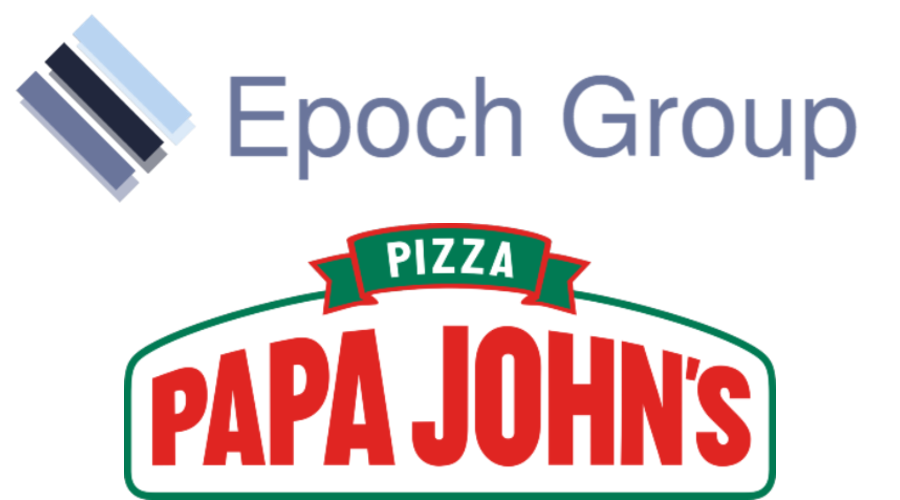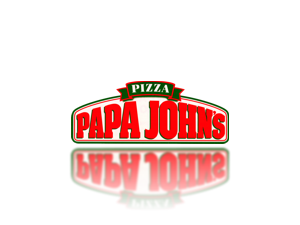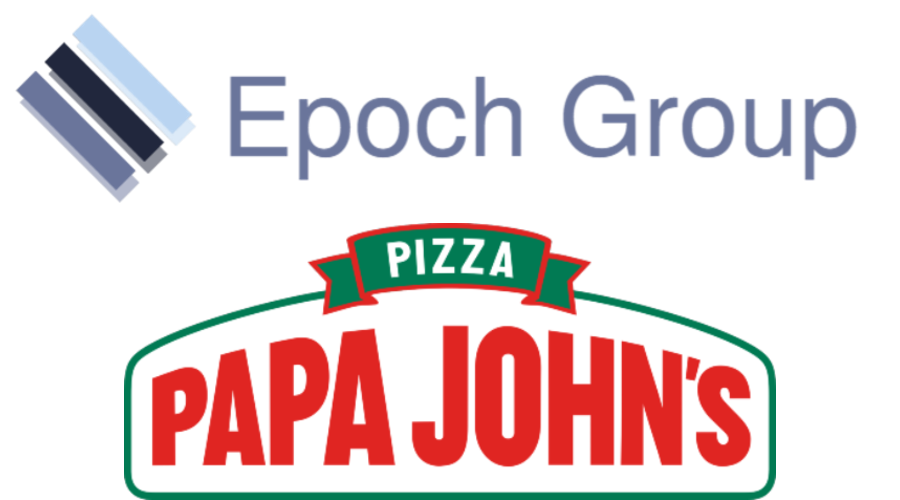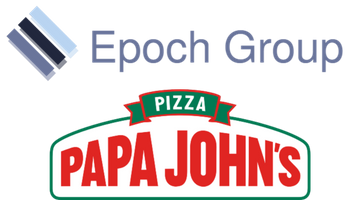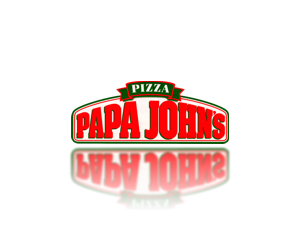Title Page
-
Site conducted
-
Conducted on
-
Prepared by
-
Location
Food Safety
Section 1: REQUIRED DOCUMENTATION
-
EHO/Local Authority Report available and critical items resolved. ● EHO/Local Authority Report available and critical items resolved.
-
Kitchen Diary due diligence logs, cleaning schedules etc not completed. ● Kitchen Diary due diligence logs not completed.<br>● If kitchen diary is not available or systematic breakdown in completion i.e. 2 or more days missing score as critical. (CRITICAL) <br>● Kitchen diary missing days are backed up on a paper copy if not completed on PDMS.
-
Cleaning schedules completed or does reflect cleaning standards observed.● Cleaning schedules not completed or does reflect cleaning standards observed.
-
Kitchen Diary Monthly Food Hygiene Management audit completed and retained. ● Kitchen Diary Monthly Food Hygiene Management audit completed and retained
Section 2: TEAM MEMBER HEALTH & HYGIENE PRACTICES
-
TM not observed working with symptoms of illness or infection (CRITICAL)
-
No eating or drinking in non designated areas. ● No eating/drinking or evidence of eating/drinking in areas not designated for eating/drinking.● No smoking, evidence of smoking anywhere in the store. ● No evidence chewing gum instore. ● No eating or drinking in customer view.
-
TM meet Papa John's hygiene, uniform, hair and jewellery standards in food area. ● Observe all team on shift performing food production tasks, this should include any TM who are conducting food handling tasks.<br>● Do NOT evaluate for "proper" uniform, only uniform compromise food safety, such as loose buttons or fraying. <br>● Proper uniform should be scored in Brand Standard under question 'TM following proper uniform standards'. ● A plain wedding band when food handling is acceptable - no gems or crevices. ● Deduct for unrestrained hair (including management) in any food handling areas. Hair must be pulled back and off shoulders with hat or hair net.
-
Food handling TM with plaster on hand not wearing a glove. (CRITICAL). ● Food handling TM with plaster on hand must wear a glove.
-
Gloves and blue (not flesh coloured) plasters available/used appropriately.● Approved gloves (non-latex) and blue (or brightly coloured) plasters are available and utilised when necessary (including over fingernail polish or acrylic nails).<br>● There are no flesh colour plasters.<br>● Plastered TM are wearing glove.<br>● Unsealed packages of gloves stored properly and not exposed to possible contamination.
-
Handwashing conducted properly as required. ● TM washes hands before handling (directly touching) food or touching a food contact surface after performing ANY of the following: - handling unwashed produce,- taking breaks, handling money, - exiting the toilet and returning to workstation - arriving to work, - coughing, sneezing, or using a disposable tissue, - cleaning tasks.<br>● TM wash hands either before putting on or changing gloves or after touching their face, hair, computer, phone or before moving to a direct food handling task or touching a food contact surface.<br>● TM follow all of these minimum handwashing steps: - wash hands with antibacterial soap, - rinse hands after washing, - dry hands with a paper towel after rinsing.<br>● Gloves removed from hands never reused.<br>● Hands never "washed" with gloves on.<br>● TM do not wash hands at non-hand wash sink.<br>● Hand wash basins are properly stocked with disposable paper towels, antibacterial soap.<br>● If hands-free sink is not available, a paper towel is used to turn off the faucet after properly washing hands.<br>● Hands are washed for a minimum of 20 seconds.
-
Handwashing procedures followed. ● Wash your hands in sinks designated for hand washing, not in utensil, food preparation, or service sinks like the three compartment sink. ● Wet your hands and forearms under running water, as hot as you can comfortably stand. Using disinfectant soap, not a hand sanitizer solution, work up a soapy lather covering your hands and forearms. ● Vigorously rub your hands together for at least 20 seconds make sure to wash palms, back of hands, between fingers, forearms and thumbs. (Singing Happy Birthday three times takes approximately 20 seconds.) ● Pay particular attention to the area surrounding and under your fingernails and between fingers. ● Rinse your hands and forearms in warm water. Keep fingertips pointed down while rinsing. ● Using a single-use paper towel, cover the faucet and then turn it off. Discard this paper towel. This prevents your hands from getting dirty from touching the faucet. ● Dry your hands with a single-use paper towel or cloth roller towel. (Never dry your hands on an apron or with a dishtowel.) Be careful not to touch anything while returning to your workstation. Most items you touch will make you have to wash your hands again. ● Hand towels are not available. ● Soap dispenser not adequately stocked. ● hand soap dispenser dirty.
-
Dedicated hand wash sink BOH with warm water 35°c to 45°c (Critical)
Section 3: APPROVED PRODUCTS
-
Only approved ingredients or food evident. ● Ingredient, product or drink is from approved supplier. ● If you see raw vegetable (except Mushroom) score minor and coach store to use pre-cut vegetables. ● Score as minor if there appears to be staff food and coach on appropriate staff storage. ● Score as critical if it appears to be stock used to make products for sale. (CRITICAL)
-
Only approved equipment and smallwares in use
Section 4: PROTECTION FROM CONTAMINATION
-
Food and packaging properly stored in good condition; damaged food segregated; TM food/medication segregated. ● Food storage in outbuilding is not allowed ● If a delivery is being made or was just made within the last 2 hours, do not score a deviation for product being on the floor. ● Small indentations not involving seams or lid rims are not a deviation; please point out that more severe damage would be an issue. If cans are leaking swollen, damaged at the seam or rusted.
-
Food utensils that are in use are stored properly (in food, handles up or clean surface). ● Food utensils placed in ready-to-eat foods with handles up. ● Utensils stored on clean area of table or equipment.
-
Actual cross contamination observed (CRITICAL)
-
Potential cross contamination is observed
Section 5: CLEANING & SANITATION
-
2 or 3 sink system is followed correctly for any manual ware washing. (CRITICAL)
-
Cold holding equipment clean. ● Unused equipment should have a sign "Not in Use".
-
Cooking equipment clean ● Unused equipment should have a sign "Not in Use". ● The slap table should be clean and organised. ● if dirt looks like build-up that should have been cleaned during the cleaning schedule, deviate.
-
Preparation and Production equipment clean
-
Other equipment clean ● Check all keyboards, mice, CSR screens, phones, card terminal and aggregator screens. All should be dust free and sanitised.
-
Sanitiser or disinfectant not available ● Must be at least 2 bottles of sanitiser made up at any given time. ● Score minor if only 1 bottle is made up. ● Score CRITICAL for no sanitiser made up. ● Paper towels are used and disposed of after single use. ● Cleaning cloths only used for deep cleaning, stored at the sink between use and discarded at the end of the day. Cloths in dirt or poor condition should be disposed of immediately. ● Cloths should never be used on an active food safer surface or while sanitising with a spray bottle.(CRITICAL)
-
Sanitiser or disinfectant not correct strength or not being applied correctly. ● MIC knows the correct contact time (5 minutes). ● Sanitiser is added to the sprayer after the water.
-
Cleaning supplies and equipment available, functional and stored clean (mops, buckets, brooms, etc) ● Evaluate unauthorised cleaning supplies (not chemicals). ● Should function as designed, without defect or need of replacement because of wear. ● Missing hazard/wet floor signs should be assessed under safety hazards.
-
Non-food contact surfaces (including shelves) clean and in good repair
-
Office is clean, organised and clutter free.
-
BOH floors, walls and ceilings/lights clean.
-
BOH Floors, walls and ceilings in good repair
-
Vents and Exhaust Hoods are clean and in good repair
-
All seals are clean and in good repair
-
Lights shielded or shatter proof bulbs in food and storage areas. ● Allow no more than 10% of non-functioning light bulbs. ● Ensure lights shielded or shatter proof bulbs in food production areas. ● BOH light is shielded and shield is not cracked/damaged, coated shatterproof bulbs musty be used. ● Check all areas BOH, including frozen, refrigerated and dry storage areas, utensil and equipment storage areas, over oven, production tables etc.
-
Trash bins sufficient, clean and well maintained (includes restroom, BOH and FOH) ● Minimum of 2 bins emptied and checked for cleanliness. ● Sanitary bin in restroom available. ● All bins must have adequate lids and foot pedal operated.
-
Bin/Bin area and outside litter bins clean and in good repair.
-
Restrooms are clean and in good working order with hot water, toilet paper, anti bacterial soap, hand dryer / hand towel.
Section 6: PRODUCT PROCEDURES & TIME-TEMPERATURE CONTROL
-
Thermometers in use are calibrated (CRITICAL)
-
Cold High risk foods IN STORAGE held above 8°C. (CRITICAL)
-
Cold High Risk foods IN PRODUCTION use held above 8°C (with no time control).
-
Food DELIVERIES accepted above 8°C chill / -15°C frozen - food not supplied under temperature control. (CRITICAL)
-
All foods must be cooked or heated to the proper internal cooking temperature. (CRITICAL) ● Core reheating temperature of 75°c is reached.
-
All Ingredients and products are rotated and labelled properly. ● System in place to ensure first in first out rotation. ● Stored ingredients not prepped have a shelf life/use by date and do not exceed it. ●If you observe newer (storage) ingredients used before older, but within shelf life, coach. ● Deduct if food has been incorrectly labelled. ● Deduct if food items have not been labelled. ● Deduct if evidence of poor rotation.
-
All cold prepped ingredients (in the production flow) are rotated and labelled properly. ● If you observe newer (storage) ingredients used before older, but within shelf life, coach. ● Deduct if food has been incorrectly labelled. ● Deduct if food items are not labelled. ● Deduct if evidence of poor rotation.
-
All stored and in production ingredients are within date and not spoiled. ● If out of date item is clearly segregated and marked "DO NOT USE" do not deduct. ● Any expired foods should be deducted. ● Food items beyond 'use by' or 'internal date'. ● Foods that are spoiled can be identified by mould, odour, colour or texture. ● HIGH RISK ITEMS; Chicken, Bacon, Ham, Spicy Beef, Italian Sausage, Pepperoni, Vegan Pepperoni, Chicken Wings, Chicken Poppers, Vegan Sausage. (CRITICAL)<br>● High risk foods - Major<br>● Low risk foods - Minor<br>● Score critical if more than three high risk food items are out of date.
-
Cans are not dented at the seam (dented cans may not be in use)
-
Frozen food defrosted according to standard. ● Check for any frozen product/ingredients on marketable as ingredients should not be frozen and in use. ● Frozen foods/ingredients are defrosted per approved procedure prior to use and in accordance with shelf life chart instructions. ● All products in use from the make table must be fully defrosted including cheese. ● Check for defrosting product/ingredients in walk-in, sink, etc. ● Verify correct defrosting procedure and approved products defrosting. ● Hand sink cannot be used for emergency defrosting. ● Defrosting items should be layered according to standard and defrost timeline given.
Section 7: EQUIPMENT
-
Cold holding equipment in good repair & maintains temperature standard. ● For equipment not in use to store food, do not deviate if there is a sign that equipment is not in use. ● If the unit it on defrost cycle or a food delivery was completed within the last hour, check the temperature again 30 minutes later. ● Ensure that all fridges have a thermometer but do not deduct if external thermometer is not working if there is an internal thermometer that is accurate. ● Evaluate excessive ice build-up on equipment. Should the ice build up present a slip risk also evaluate under safety hazard. ● If excessive temperature has affected product temperature then product temperatures should also be deviated if in excess of standard. ● Deviate if fridge door is left open after use.
-
Compartment or prep sink needs no repair ● Hand sinks evaluated at 2.5 ● Note any rusting around the washing up area. ● Cleanliness of the washing up area - including chemical shelf. ● Any mould built up on sealant, sealant should be clean and in good repair.
-
Cooking equipment in good repair ● Unused equipment should have a sign indicating "NOT IN USE".
-
Preparation and Production equipment in good repair. ● Unused equipment should have a sign indicating "NOT IN USE".
-
Other equipment in good repair. ● Unused equipment should have a sign indicating "NOT IN USE".
Section 8: CHEMICALS
-
Approved chemicals are properly labelled, stored and handled correctly. ● Chemicals stored above food = chemical cross contamination. ● Approved ovewn cleaners are alllowed but not retail versions. ● if a team member is applying a pesticide, score it under pest question. ● Tubs or containers for pre-soaking smallwartes do not need to be labelled. ● If paints are kept in the facility, they must be stored covered, with the opriginal lid and in the original container, and in accordance with chemical storage requirements defined in this standard. (COSHH documentation required). ● If chemicals stored below food.smallwares 30cm or 12 inch requirement does not apply. ● Chemicals, cinluding sanitise bottles must always be locked up or otherwise inaccessible to customers.
Section 9: PEST CONTROL
-
Approved PMP providing services with pest control devices installed and maintained.
-
Possible pest entry points sealed and harbourage conditions prevented, including storage sheds and landscaping
Section 10: SEWAGE & PLUMBING
-
Hot water available in the kitchen as measured at compartment sink between 44°c to 49°c. (CRITICAL) / (CLOSURE DECISION).
-
Minimum of one functioning TM toilet available
-
Plumbing needs repair
-
No sewage backup (stores or kitchen drains) (CRITICAL) / (CLOSURE DECISION).
-
Grease traps and all drains covered, clear and functioning properly with no offensive or chemical smell
Section 11: ELECTRIC
-
Store has electric power. (CRITICAL)
Section 12: ALLERGEN CONTROLS
-
Staff not aware of how to answer questions about allergens ● Where can a customer go to find information on allergens? ● Can you guarantee no risk of cross contamination?
-
Is the QR code allergen being displayed at the point of sale and on menus
-
Who makes the final decision on what food to order based on the Allergy data sheets ● If the MIC doesn't answer with "the customer", deviate.
-
MIC can explain the correct vegan procedures ● Wash hands before handling any vegan products. ● One TM only completes the entire order. ● TM uses correct vegan silicone sheets. ● TM uses correct dedicated black pizza cutter when it items go through the oven.
-
MIC can explain the correct gluten free procedures ● Wash hands before handling any vegan products ● Clean apron worn when making any gluten free products. ● Fresh sauce, cheese and ingredients is used when completing an order. ● TM uses the dedicated GF silicone paper. ● TM knows not to cut the GF pizza when it comes out of the oven. ● One TM only completes the entire order. ● Store has a dedicated GF station to include, clean spoodles and other utensils.
-
Cross contamination risks from the 14 legally defined allergens observed in food storage equipment and facilities. <br>● If evidence of potential or actual cross-contamination in storage.
-
Cross contamination risks from the 14 legally defined allergens observed during the preparation and cooking of food. ● If evidence of potential or actual cross-contamination during preparation.
Health and Safety Section
Section 13: REQUIRED H&S DOCUMENTATION
-
Statutory maintenance records available and current. <br>● Fire extinguisher servicing - Annual records<br>● Safety of hard wired electrics / fixed wire certificate - 5 yearly<br>● Examination of all gas appliances for safety (gas safety certificate) - Annual records<br>● Portable appliance safety (PAT testing) - Annual records<br>● Duct cleaning - Annual records<br>● Emergency light testing - Annual records<br>● Fire alarm service - Annual records
-
Health and safety documentation complete to standard. ● Latest version of the operational manual not available for inspection.<br>● The Health & Safety Law poster not displayed and/or completed. (Store managers name and NSF/CMI - 08448472720)<br>● The list of current First Aiders or appointed persons not displayed.<br>● External emergency doors not suitably signed.<br>● Due Diligence Logs not completed.<br>● Risk assessments, accident reporting, checklists and other safety documentation is completed as required.<br>● MIC can locate the MSDS (Material safety data sheets) documentation, Cleaning Manual available? <br>● MIC understands COSHH and its application, can tell you what COSHH (Control of Substances Hazardous to Health) stands for? <br>● Any market required H & S notices and policies must be up to date and displayed as required.<br>● MIC understands where to locate FSMS (Food Safety Management System) documents - Food safety manual Health & Safety manual and PDMS)
Section 14: STORE SAFETY PROCEDURES
-
Fire procedures and equipment are implemented and maintained according to standard ● Fire extinguishers are charged, labelled and not due for service.<br>● Fire extinguishers are properly placed and appropriately used.<br>● All alarms, lights, panic bars and exit signs are in place and working properly.<br>● Emergency assembly point is filled in and on display.<br>● Weekly fire alarm tests recorded in the fire log book.<br>● Weekly emergency lighting tests are recorded in the fire log book.<br>● Fire evacuation drill completed monthly and recorded in the fire log book.
-
Fire routes and doors are clear and accessible, unlocked and functioning correctly. (CRITICAL) ● Fire routes should be clear with no blockages or items stored that completely or partially block the route or exit - this is regardless of how quickly the blockage can be removed e.g. bags of rubbish or trolleys. Fire evacuation routes to fire exits are clear, well-lit and fire doors are always unlocked and properly functioning. ● Score Critical if fire exit is locked. ● External emergency doors not suitably signed (Score Minor). ● External emergency doors not suitably signed - Score Minor.
-
Electrical and Gas safety procedures are followed according to standard ● All practices for electrical and gas safety are followed, to include the electrical panel being unblocked and electrical outlets covered/power cords in good condition.
-
No slip or trip hazards are present ● No slip or trip hazards such as wet floor without caution sign, cords on floor, buckling flooring, major uneven pavement, ice on floor or floor of freezer, etc.
-
Hazardous situations are not observed or unsafe equipment. ● No hazards to TM or guests, including but not limited to damaged/unsafe high chairs or changing stations, unsafe back door security, unsafe knife/sharps procedures, heavy items stored above shoulder level, or other unsafe equipment or practices. ● Team members follow appropriate behaviours and procedures that demonstrate safety is a first priority.
-
Safety supplies available and used according to standard. ● A First Aid Kit is available and in date<br>containing required items.<br>● PPE kit is available and includes heavy aprons, chemical gloves (black rubber), chemical goggles and respiratory mask.
-
Checklists completed and backed up for the last 3 months. ● COVID daily manager checklists. ● COVID driver cleaning checklists. ● Driver checklists.
Brand Standards
Section 15: COMPLIANCE TRAINING
-
Target completion rates for Cornerstone training - Health & Safety, NTO, Cornerstone Primary station, current LTO and GDPR. ● Cornerstone training should be completed by of team members.
-
Are all team members on the schedule registered on Cornerstone? Team members should be registered on cornerstone to be checked against the schedule
-
Two Team Members from the store with with valid Level 2 Food Hygiene training certificates available and less than 3 years old. (Designated SM should be 1 of those).
-
MTP or ROC trained Manager registered to the store. (CRITICAL) ● MTP or ROC trained Manager registered to the store. (Does not need to be working at the time of audit)
-
Corrective actions from the previous NSF audit have not been completed and signed off. Manager should be able to demonstrate corrective actions have been completed from previous NSF Visits. ● Check the last report to ensure corrective actions have either been completed or progress since last audit.● Complete and maintained = pass, Complete & not maintained = minor, No completion = Major
Section 16: Dough Management
-
Pattie placement evident in dough trays. ● Dough in trays should be evenly separated.
-
Enough proofed dough.● Based on previous weeks sales there should always be sufficient dough ready.
-
Dough in use proofed correctly. ● Fresh dough must be within 3-7 days old for<br>use. ● This is the dough that is being used to make pizza at the time of your visit, do not check dough in fridges) ● There must be no day 1 or day 2 dough or if 8+ days in use. ●Date label on tray shows day 7. Count back 5 days to find day 3.
-
Dough in use at the correct temperature of 10-15.6 degrees. Dough in use must be temperature of between 10-15.6 degrees. ●Mark as Minor if dough is not within temperature. ● Mark as Major if there are gel lines on the cut test pizzas.
Section 17: BRAND STANDARDS INGREDIENTS
-
Enough products prepped for the current days projected sales.● Ingredients must be available.
-
All tinned products been fully decanted?
-
Is Pizza Sauce in use at ambient temperature? ● Pizza sauce must be at an ambient<br>temperature 10°c - 29°c. ● The temperature of the sauce should be checked while at the sauce station. Use a sanitised and calibrated thermometer to check sauce temperature. ● Check that the pizza sauce is not being<br>used from the fridge and once opened and decanted into container it is being used from Ambient (10 – 29°C ).<br>● Score minor if sauce is outside of temperature range because of room temperature is either lower or higher score<br>minor. ● Score major only if sauce is used directly from fridge.
Section 18: PIZZA SCORING & SUPERIORITY TEST
-
MCE Pizza 1 Double Pepperoni. Pass mark 8-10, Major mark < 7<br>● 50% of curst is 2.5cm (1 inch) wide - if not deduct 1 point.<br>● Pizza shape is correct - if not deduct 1 point<br>● 50% of pizza has a cheese seal with cheese against the crust and no red edges - if not deduct 1 point.<br>● 75% of pizza should be covered with cheese - if not deduct 1 point<br>● Equally distributed toppings across all slices (3 pepperoni per slice) - if not deduct 1 point<br>● Ingredients match laminate guide and the order (toppings, cheese) (25 Pepperoni for a small, 35 Pepperoni for a medium, 45 Pepperoni for a large, 55 Pepperoni for a XXL) - If not deduct 3 points. <br>● Pizza under/over topped. <br>● If gel lines are visible after cutting through the middle of a slice with a utility knife - If visible deduct 1 point.
-
MCE Pizza 2 Vegan Chilli Freak. Pass mark 8-10, Major mark < 7<br>● 50% of curst is 2.5cm (1 inch) wide - if not deduct 1 point.<br>● Pizza shape is correct - if not deduct 1 point<br>● 50% of pizza has a cheese seal with cheese against the crust and no red edges - if not deduct 1 point.<br>● 75% of pizza should be covered with cheese - if not deduct 1 point<br>● Equally distributed toppings across all slices (2 of each topping per slice) - if not deduct 1 point<br>● Ingredients match laminate guide and the order (Amarillo sauce, green peppers, onions, red chilli's, jalapenos and cheese) - If not deduct 3 points <br>● Pizza under/over topped. <br>● If gel lines are visible after cutting through the middle of a slice with a utility knife - If visible deduct 1 point.
Section 19: SERVICE & CUSTOMER EXPERIENCE
-
CSR answer the call to brand standard? ● CSR must answer phone giving store name.
-
Order repeated & a price quoted. ● CSR should repeat order and quote price. ● CSR should advise that do not accept cash payments, card only.
-
Named item upsold. ● CSR to offer additional specific items e.g Chicken poppers, Pepsi or potato tots.
-
Safety Advisor acknowledged within 10 seconds of arrival at the store. ● Customers must be acknowledged<br>within 10 seconds (when open).
-
CSC TTDT Customer Service Compliance last 30 days. ● TTDT Customer Service compliance last 30 days
-
Papa Talk alerts unresolved that are older than 2 days. ● Papa Talks must be resolved within 2 days.
-
Quality seals used, and evidence that contact free procedures are being followed ● Score minor if no quality seal is used. ● Score major if the store has no quality seals available.
Section 20: PAPA JOHN'S IMAGE & CLEANLINESS
-
Exterior doors and windows clean and in good condition. ● Doors and windows must be clean and in good condition. ● No evidence of cobwebs. ● Front of store should be swept and no rubbish surrounding the store.
-
Posters, menu boards or other POS material clean, current and in good condition. Posters, menu boards or other Point of Sale POS material clean, current and in good condition. ● Observe the cleanliness of and frame of the menu board. They should be clean and in good repair. Posters and POS material should be in good repair, not ripped, faded or have holes in them. ● There should be no images of Founder John Schnatters on any materials in any areas of the store, if observed score Critical.
-
All laminates up to date, displayed and in good condition. ● All laminates must be up to date, displayed and in good condition.
-
Customer area floor & Walls clean and organised. ● Customer area floors & Walls must be clean and organised.
-
Customer area lights clean and working. ● Customer area lights must be clean and working.
-
Customer area seats/benches clean and in good condition. ● Customer area seats/benches should be clean and in good condition.
-
Is external signage approved, clean and in working order. ● External signage must be approved, clean and in working order.
-
The make line chiller correctly set out.
-
GDPR compliance with the CCTV sticker displayed in the window. ● CCTV sticker should be displayed<br>in front window.
-
TM following proper uniform standards. ● Uniforms are approved, clean and complete.● Allowed Uniform: TMs are allowed to wear trousers, shorts, skirts or skorts in black, grey, navy, brown and khaki (no white). Jeans are welcome too, in darker washes and hues only (no light tones).● Not Allowed Uniform: Athletic, acrylic or stretchy-fabric leggings worn alone. Overly long pant legs that drag on the floor. Leather. Prints. ● If you observe delivery drivers preparing / handling food should follow hygiene controls e.g. hand washing and wear apron and hat, it is acceptable for hat and apron. ● Major score if more than two members are not wearing approved PJ shirts or more than<br>2 members not utilising aprons while preparing food or anyone without a cap on while in the BOH. ● Minor score if bottoms are incorrect / less than two members wearing shirts / aprons as per the above criteria.
-
Delivery Hot Bags clean, well maintained and used properly. ● Delivery hot Bags should be clean, well maintained and used properly.
-
Exterior walls, windows & doors of the restaurant clean, free of build-up, in good condition, and functioning as<br>expected. (NON-SCORING) (MUST ATTACH PICTURE OF STORE FRONT)
-
Exterior lights and signage clean, free of build-up, in good condition, and functioning as expected. (NON-SCORING)
-
Late night license displayed for stores selling hot food or hot drink at any time between 11pm and 5am.
